第22章
Similarly when the sight of certain things was suggested to the sub-conscious Lucie, the normal Lucie suddenly became partially or totally blind."What is the matter? I can't see!" the normal personage suddenly cried out in the midst of her conversation, when M.Janet whispered to the secondary personage to make use of her eyes.The anaesthesias, paralyses, contractions and other irregularities from which hysterics suffer seem then to be due to the fact that their secondary personage has enriched itself by robbing the primary one of a function which the latter ought to have retained.
The curative indication is evident: get at the secondary personage, by hypnotization or in whatever other way, and make her give up the eye, the skin, the arm, or whatever the affected part may be.The normal self thereupon regains possession, sees, feels, or is able to move again.
In this way M.Jules Janet easily cured the well-known subject of the Salpétrière, Wit., of all sorts of afflictions which, until he discovered the secret of her deeper trance, it had been difficult to subdue."Cessez cette mauvaise plaisanterie," he said to the secondary self - and the latter obeyed.The way in which the various personages share the stock of possible sensations between them seems to be amusingly illustrated in this young woman.When awake, her skin is insensible everywhere except on a zone about the arm where she habitually wears a gold bracelet.This zone has feeling; but in the deepest trance, when all the rest of her body feels, this particular zone becomes absolutely anaesthetic.
Sometimes the mutual ignorance of the selves leads to incidents which are strange enough.The acts and movements performed by the sub-conscious self are withdrawn from the conscious one, and the subject will do all sorts of incongruous things of which he remains quite unaware."I order Lucie to make a pied de nez , and her hands go forthwith to the end of her nose.Asked what she is doing, she replies that she is doing nothing, and continues for a long time talking, with no apparent suspicion that her fingers are moving in front of her nose.I make her walk about the room; she continues to speak and believes herself sitting down."
M.Janet observed similar acts in a man in alcoholic delirium.Whilst the doctor was questioning him, M.J.made him by whispered suggestion walk, sit, kneel, and even lie down on his face on the floor, he all the while believing himself to be standing beside his bed.Such bizarreries sound incredible, until one has seen their like.Long ago, without understanding it, I myself saw a small example of the way in which a person's knowledge may be shared by the two selves.A young woman who had been writing automatically was sitting with a pencil in her hand, trying to recall at my request the name of a gentleman whom she had once seen.She could only recollect the first syllable.Her hand meanwhile, without her knowledge, wrote down the last two syllables.In a perfectly healthy young man who can write with the planchette, I lately found the hand to be entirely anaesthetic during the writing act; I could prick it severely without the Subject knowing the fact.The writing on the planchette , however, accused me in strong terms of hurting the hand.Pricks on the other (non-writing)
hand, meanwhile, which awakened strong protest from the young man's vocal organs, were denied to exist by the self which made the planchette go.
We get exactly similar results in the so-called post-hypnotic suggestion.
It is a familiar fact that certain subjects, when told during a trance to perform an act or to experience an hallucination after waking, will when the time comes, obey the command.How is the command registered?
How is its performance so accurately timed? These problems were long a mystery, for the primary personality remembers nothing of the trance or the suggestion, and will often trump up an improvised pretext for yielding to the unaccountable impulse which possesses the man so suddenly and which he cannot resist.Edmund Gurney was the first to discover, by means of automatic writing, that the secondary self is awake, keeping its attention constantly fixed on the command and watching for the signal of its execution.
Certain trance-subjects who were also automatic writers, when roused from trance and put to the planchette, - not knowing then what they wrote, and having their upper attention fully engrossed by reading aloud, talking, or solving problems in mental arithmetic, - would inscribe the orders which they had received, together with notes relative to the time elapsed and the time yet to run before the execution. It is therefore to no 'automatism'
in the mechanical sense that such acts are due: a self presides over them, a split-off, limited and buried, but yet a fully conscious, self.More than this, the buried self often comes to the surface and drives out the other self whilst the acts are performing.In other words, the subject lapses into trance again when the moment arrives for execution, and has no subsequent recollection of the act which he has done.Gurney and Beaunis established this fact, which has since been verified on a large scale;
and Gurney also showed that the patient became suggestible again during the brief time of the performance.M.Janet's observations, in their turn, well illustrate the phenomenon.
"I tell Lucie to keep her arms raised after she shall have awakened.
Hardly is she in the normal state, when up go her arms above her head, but she pays no attention to them.She goes, comes, converses, holding her arms high in the air.If asked what her arms are doing, she is surprised at such a question, and says very sincerely: 'My hands are doing nothing;